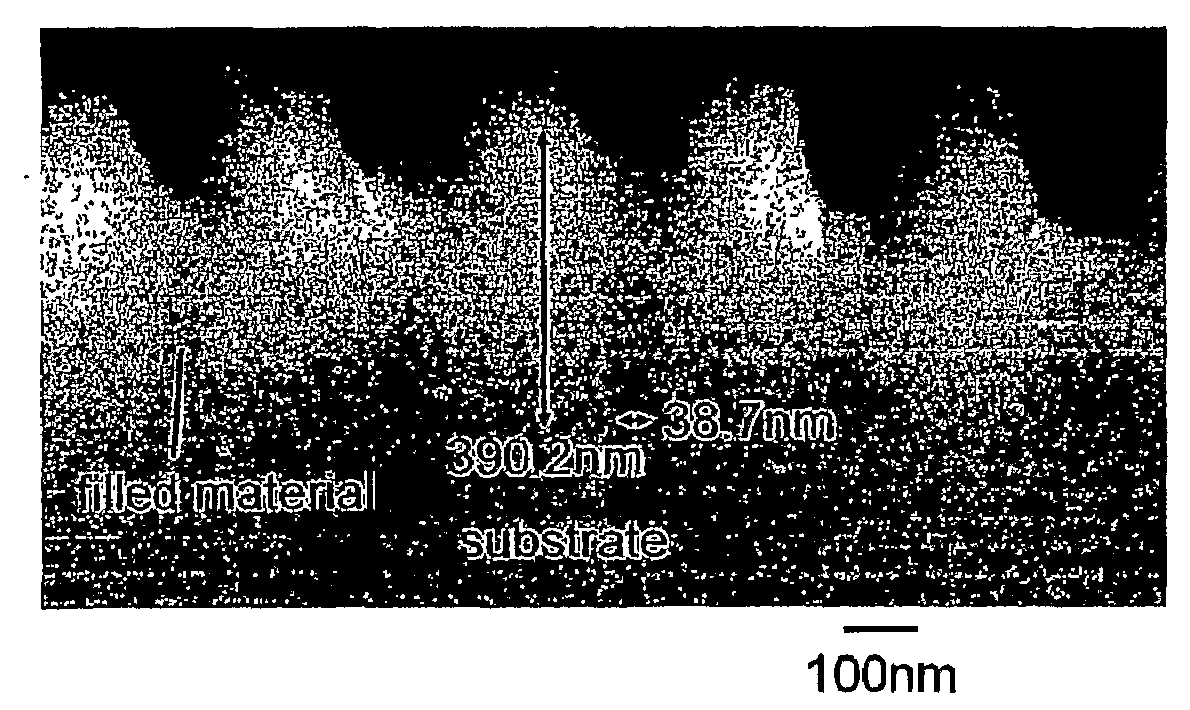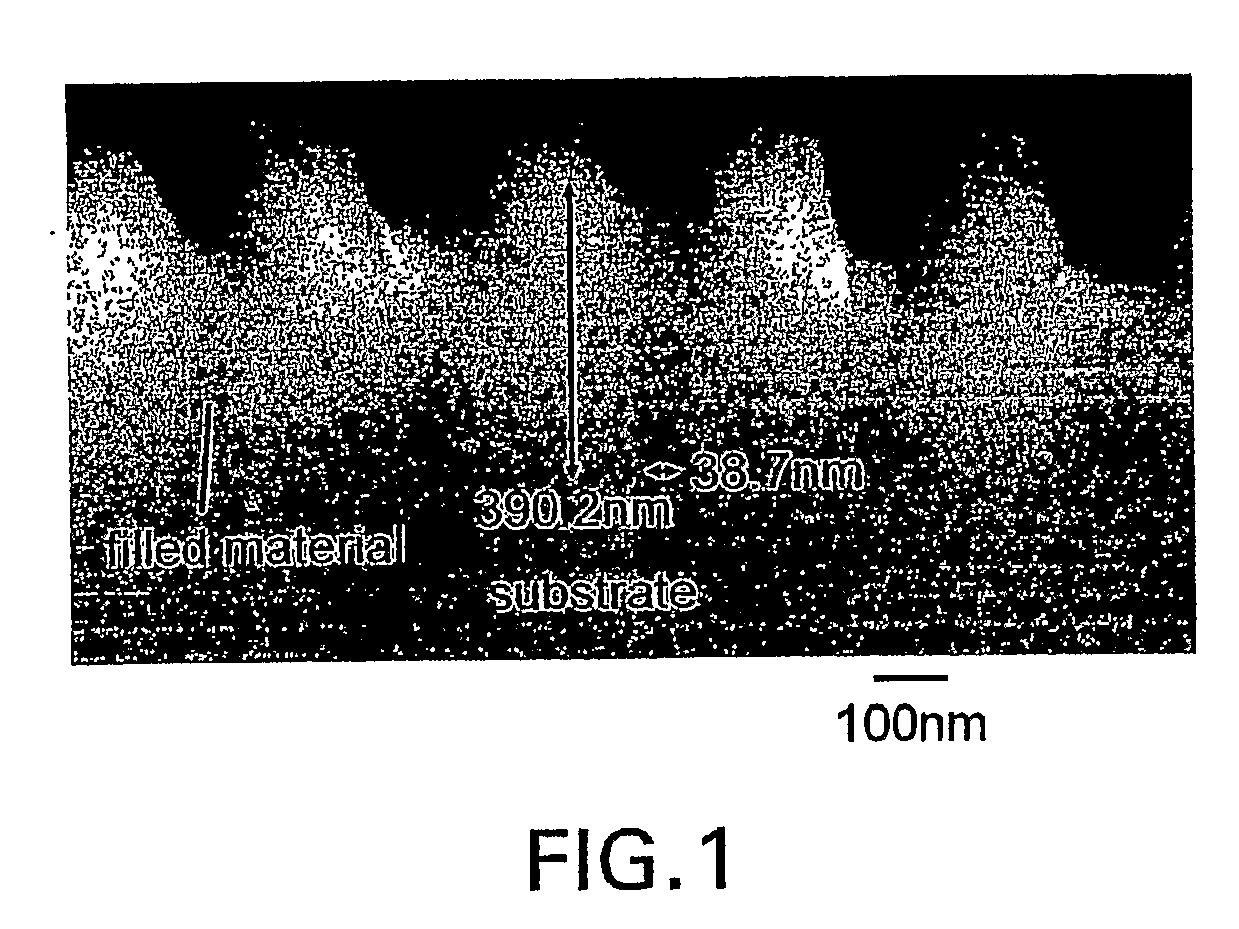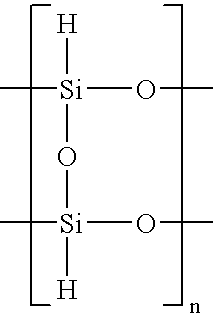Method of curing hydrogen silsesquioxane and densification in nano-scale trenches
a technology of hydrogen silsesquioxane and nano-scale trenches, which is applied in the direction of semiconductor devices, semiconductor/solid-state device details, electrical devices, etc., can solve the problems of cvd methods and difficulty in supplying sufficient trenches
- Summary
- Abstract
- Description
- Claims
- Application Information
AI Technical Summary
Benefits of technology
Problems solved by technology
Method used
Image
Examples
example 1
[0034]Two finely filtered HSQ solutions containing 4 percent by weight and 8 percent by weight respectively of HSQ in octamethyltrisiloxane were used. The film was spin coated on a silicon wafer surface. In the first low temperature cure step, the film was initially maintained at 100° C. in a moisture steam environment for 30 minutes. In the second low temperature cure step, the temperature was raised to 250° C. in the moisture steam environment for one hour. During these two low temperature cure steps, the moisture steam remained in the trenches and reacted with the HSQ. The film was then further cured in the third high temperature cure step at 800° C. in a moisture steam or nitrous oxide environment for one hour. Etching was carried out by exposing the film to an aqueous 200:1 solution of hydrofluoric acid for 60 seconds, and determining film loss. The resulting film is shown in FIG. 1.
example 2
Comparison
[0035]Example 1 was repeated using a normal oxidation cure without moisture steam at 800° C. No etch resistance of the film was observed. The filled material in the trenches was completely removed.
example 3
[0036]Example 1 was repeated, and the cured HSQ films in the nano-scale trenches of the silicon wafer were further densified under a nitrous oxide (N2O) environment. In particular, the curing of the thin film of HSQ resin coated on the silicon wafer in a nitrous oxide ambient was determined using different temperatures. The wet etch resistance in the nano-scale trenches was determined using the same HF etch procedure in Example 1. The process time for each determination was one hour. As shown in Table 1, the film loss of HSQ films cured in nitrous oxide in diluted HF solutions was decreased, compared to HSQ films cured under an oxygen or nitrogen environment. In particular, HSQ films cured under nitrous oxide at 800° C. had film loss comparable to that of a thermal oxide film. The values for thermal oxide film in Table 1 are published data in the literature. Table 1 also shows that the mechanical properties (i.e., hardness and modulus) of HSQ films cured under nitrous oxide were inc...
PUM
 Login to View More
Login to View More Abstract
Description
Claims
Application Information
 Login to View More
Login to View More - R&D
- Intellectual Property
- Life Sciences
- Materials
- Tech Scout
- Unparalleled Data Quality
- Higher Quality Content
- 60% Fewer Hallucinations
Browse by: Latest US Patents, China's latest patents, Technical Efficacy Thesaurus, Application Domain, Technology Topic, Popular Technical Reports.
© 2025 PatSnap. All rights reserved.Legal|Privacy policy|Modern Slavery Act Transparency Statement|Sitemap|About US| Contact US: help@patsnap.com



